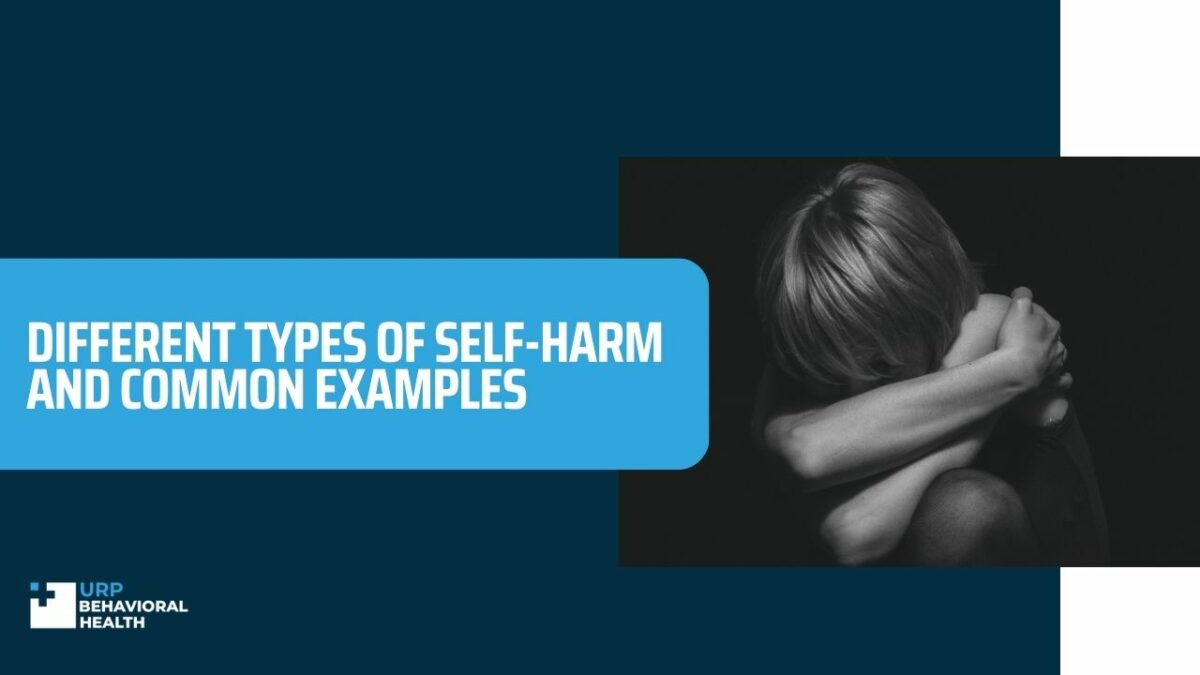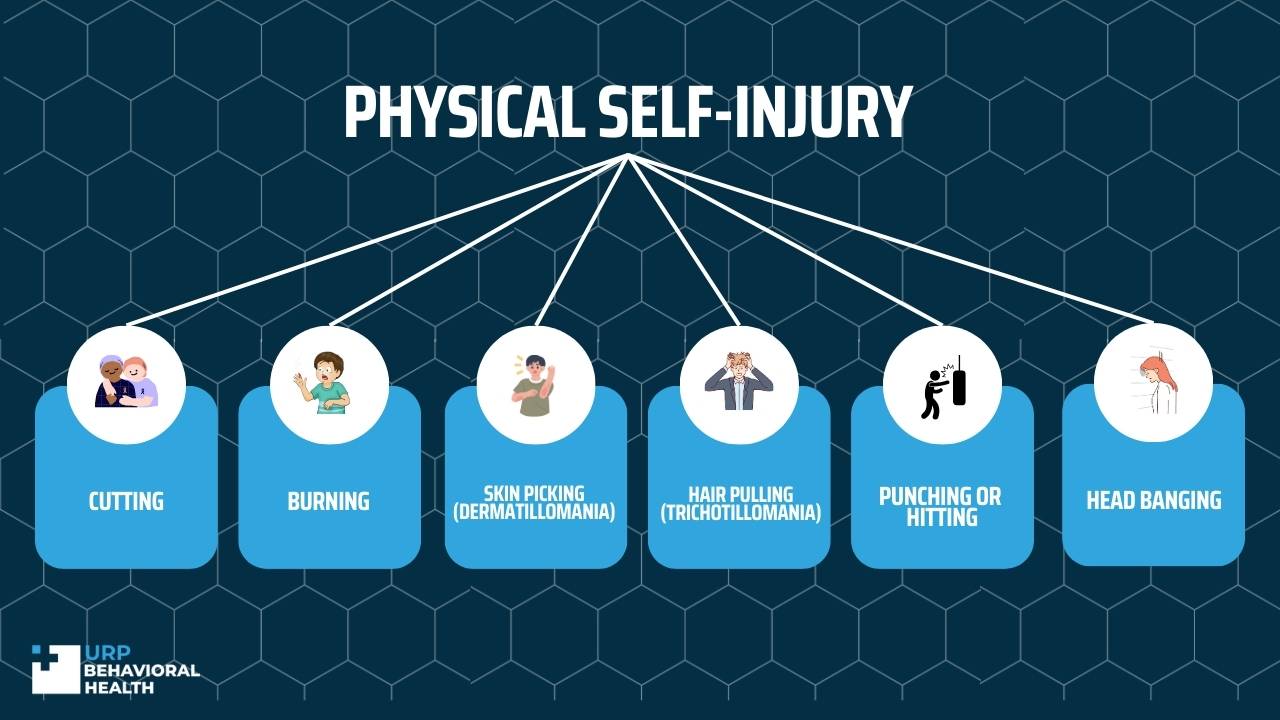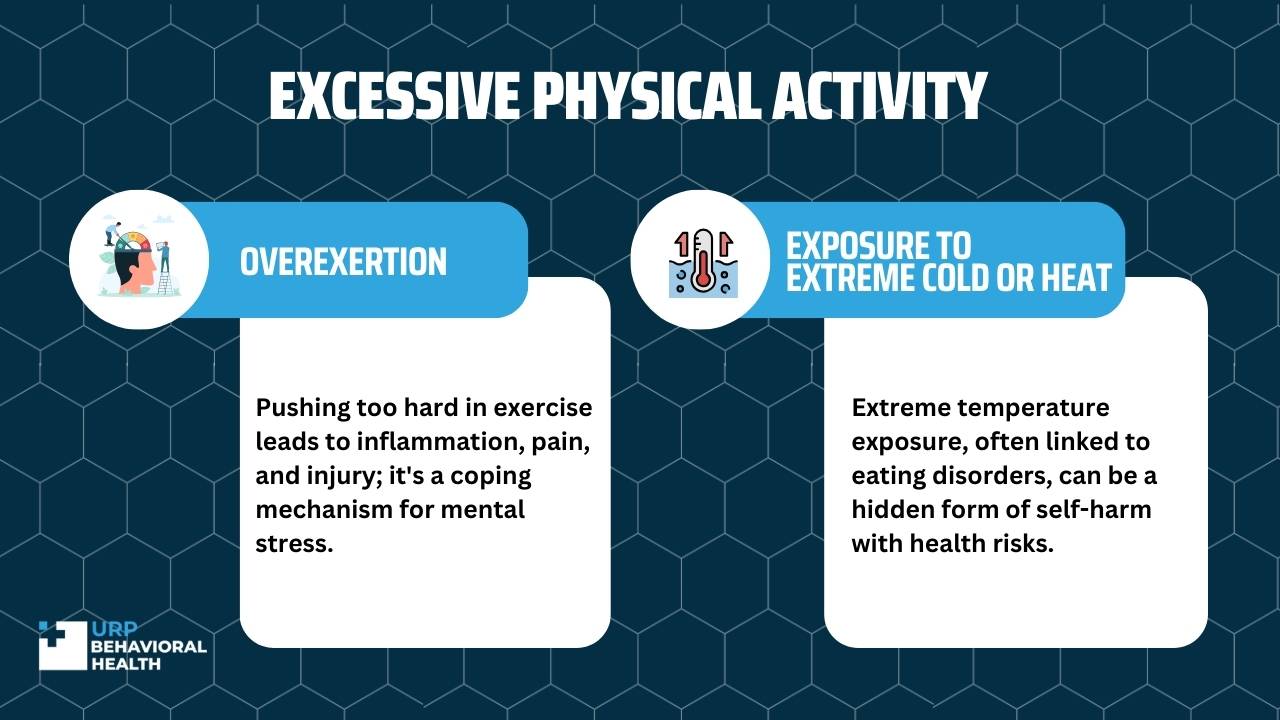Different Types of Self-Harm and Common Examples

For people struggling with certain mental health conditions, self-harm is a method to deal with overwhelming emotions. It’s often observed in conditions such as bipolar disorder, borderline personality disorder, and depression. Current research shows varying rates of self-harm prevalence among different demographics. But regardless of the true prevalence rate, studies can confirm that self-harm behaviors are most common in adolescents and young adults.
When people think of self-harm, they usually imagine physical self-harm, but there are various other types as well. Due to a lack of awareness of these different types, self-harm can go unnoticed. Here are the types of self-harm, along with common examples of each type.


Physical Self-Injury
Cutting
Among physical self-injury behaviors, cutting is often associated with self-harm. It includes cutting into the skin using razor blades or carving words and/or symbols into the skin. Commonly affected areas include skin on the arms, wrists, upper chest, and inner thighs. Though the cuts aren’t very deep, they can require urgent medical attention to dress or stitch the sounds.
Burning
In this form of physical self-injury, people may use things like matches, cigarettes, lighters, candles, or even hot metal to burn their skin. Sometimes, people may burn themselves in specific patterns, like burning a certain part of the skin or using a certain method.
Skin Picking (Dermatillomania)
In addition to inflicting self-injury, you may feel the urge to pick on your skin. It’s also known as compulsive skin picking or excoriation disorder, and it involves picking on specific areas of the skin. It can damage the skin because continuous skin picking can prevent wounds from healing. It’s often associated with OCD, substance use disorder, and body dysmorphic disorder.
Hair Pulling (Trichotillomania)
This behavior involves pulling hair from your scalp, eyebrows, eyelashes, or any other part of the body. It’s also known as trichotillomania and is an impulse control disorder in which you pull out hair as a way to cope with stress.
Punching or Hitting
Similar to cutting, it involves punching or hitting yourself to cause physical pain. It also includes punching something like a wall or using an object to hit yourself. These can result in bruise patterns that are dissimilar to those that result from common injuries.
Head Banging
Head banging is often associated with personality, psychotic, and developmental disorders. It’s dangerous and is linked to significant brain damage. Regardless of the disorder, head banging is used as a way to cope with distress, psychotic episodes, and anger.
Self-Destructive and Risky Behavior
Misusing Alcohol or Drugs
A common example of this type of self-harm involves using illicit substances. It can also include misusing medication by not taking the prescribed amount or as per the doctor’s guidelines. Abusing illicit substances or alcohol is a self-harm method because people use it to cope with overwhelming emotions despite its negative effects. In addition to being a form of self-harm, substance abuse is a risk factor for other types of self-harm behavior.
Eating Disorder Behaviors
Habits such as restrictive eating and binging-purging are common symptoms of eating disorders. Though these behaviors are commonly used to alter one’s weight, research finds a strong correlation between these behaviors and self-harm.
Of course, it’s important to remember that restrictive diets and binge eating could simply be a pattern of self-destructive behaviors as opposed to an eating disorder. For people struggling with stress and intense emotions, these actions could be a way to regain control. They include:
- Deliberate starvation: this is when you deliberately reduce your food intake to consume far less than the recommended average number of calories.
- Binge eating: It involves eating large amounts of food within a short period without any control over how much you eat.
Engaging in these behaviors may cause a significant increase or decrease in your weight over time. To be sure, you should visit a mental health specialist and get a diagnosis.

Excessive Physical Activity
Overexertion
This happens when you push yourself physically during exercise or athletic training, and it’s a leading cause of accidental injuries. It results in inflammation, pain, and discomfort. If it isn’t addressed, it can cause muscles to stretch or even tear. For people dealing with mental health issues, compulsive exercise is a way to cope with stressful feelings.
Exposure to Extreme Cold or Heat
In this example of self-harm, you deliberately expose your body to extremely high or low temperatures. Research links these behaviors to eating disorders by framing it as a method to influence body weight and/or shape. For some, it’s regarded as a controlled method of self-harm because it doesn’t leave scars. However, it can result in long-term health implications as well.
Conclusion
Despite being a common symptom in different disorders, self-harm is often associated with physical behaviors. But besides self-injury, there are other modes of self-harm that can lead to emotional pain. Because these behaviors don’t leave scars or bruises, they are more difficult to identify, but just like physical self-harm, these methods are only a temporary way to cope with stressful feelings. It’s important to seek professional help to learn healthy and productive methods that improve your coping skills.
Let us guide you towards healing
We know that seeking treatment can be overwhelming, but our staff is here to make the process as smooth as possible. We’re available 24/7 to address any questions or concerns you may have.

